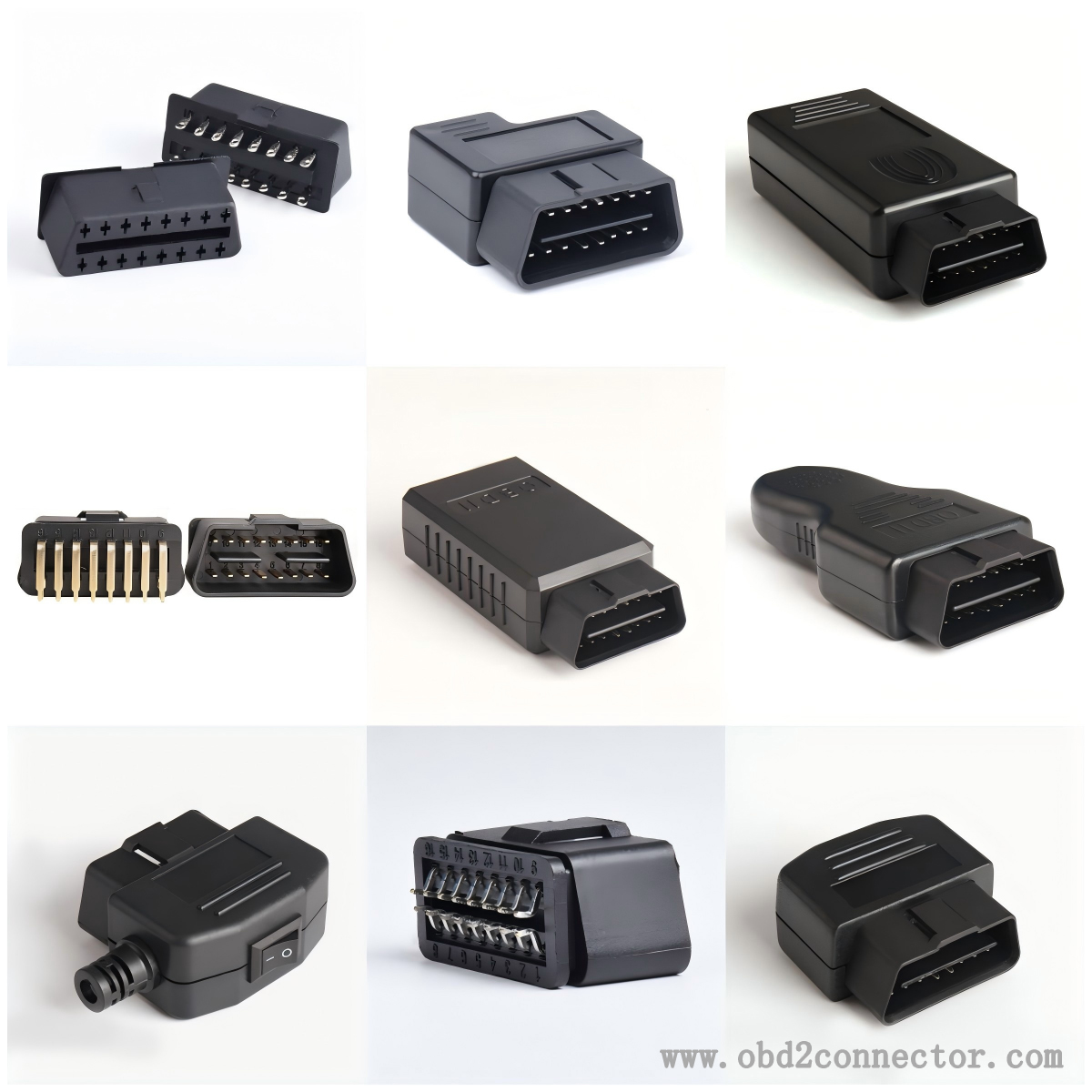What factors can affect the performance of OBD2 connectors?
Here are some factors that can affect the performance of OBD2 connectors:
Electrical factors
Power stability: Unstable factors such as voltage fluctuations and ripples in the vehicle power system can affect the power quality provided by the OBD2 connector for diagnostic equipment. If the voltage is too high or too low, it may cause the diagnostic equipment to work abnormally, unable to accurately read vehicle information or produce incorrect diagnostic results.
Electromagnetic interference: Various electronic devices inside the vehicle, such as the engine ignition system and electric fuel pump, can generate electromagnetic interference during operation. If the electromagnetic compatibility design of the OBD2 connector is poor, the transmitted signal may be interfered with, resulting in data transmission errors or losses, affecting diagnostic performance.

Mechanical factors
Installation method: The installation position and method of OBD2 connector have a significant impact on its performance. If the installation location is not reasonable, such as near heat sources, vibration sources, or places that are susceptible to water immersion, it may cause premature aging and damage to the connector, affecting electrical connections and signal transmission. In addition, if the installation is not firm or too tight or too loose, it can cause problems such as loosening and poor contact of the connector during vehicle operation.
Physical damage: In daily use, connectors may be subjected to external forces such as impact, pulling, squeezing, etc., which can cause the shell to crack, the pins to deform or break, thereby affecting their electrical performance and the reliability of mechanical connections. For example, accidentally colliding with a connector during vehicle maintenance or applying excessive force when plugging in or unplugging diagnostic equipment can cause physical damage.
environmental factor
Temperature: The temperature range of the environment in which the vehicle is located is large, and high temperatures may cause a decrease in the material properties of the connector, such as deformation of the plastic shell and aging of the insulation material, leading to a deterioration in electrical performance; Low temperature may cause the elastic components of the connector to harden, affecting contact reliability. Under extreme temperature conditions, the performance of OBD2 connectors may be significantly affected, and even unable to function properly.
Humidity and corrosion: A humid environment can easily cause condensation of water vapor inside the connector, leading to problems such as short circuits and corrosion. If the vehicle frequently travels in harsh outdoor environments, such as coastal areas or high humidity areas, the salt and moisture in the air will accelerate the corrosion of connector metal components, increase contact resistance, and reduce signal transmission quality.
Equipment and software factors
Compatibility of diagnostic equipment: Diagnostic equipment produced by different manufacturers may have differences in communication protocols, electrical characteristics, and other aspects. If the diagnostic equipment is not fully compatible with the OBD2 connector, it may not be able to correctly identify vehicle information or can only partially read data, affecting the comprehensiveness and accuracy of the diagnosis.
Software version and updates: The electronic control unit (ECU) software and diagnostic equipment software of the vehicle need to be updated in a timely manner to adapt to the development of vehicle technology and new diagnostic requirements. If the software version is too low or not updated in a timely manner, it may cause communication problems between the OBD2 connector and the vehicle ECU, making it difficult to correctly interpret new fault codes or data formats.